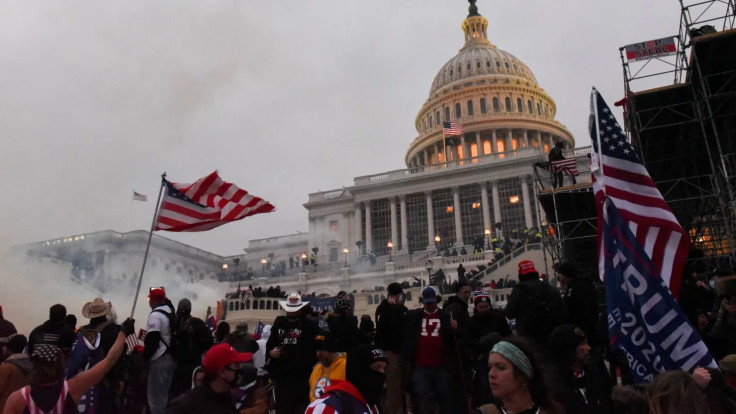US Government Shuts Down After Senate Funding Talks Collapse; Trump Threatens 'Irreversible' Cuts

KEY POINTS
- Senate fails to pass funding bills, triggering government shutdown
- 750,000 federal employees face furloughs and delayed paychecks
- Democrats and Republicans trade blame over collapse of talks
The United States government entered a shutdown at 12:01 a.m. ET on October 1, 2025, after the Senate failed to pass stopgap legislation to extend federal funding.
The lapse in appropriations has forced federal agencies to begin shutdown procedures, putting hundreds of thousands of workers on furlough and disrupting public services across the country.
Senate Talks Collapse
Both Republican and Democratic funding proposals failed to clear the Senate's 60-vote threshold late Tuesday.
Republicans' stopgap would have extended funding until November 21 but excluded health-benefit expansions Democrats demanded. The Democratic countermeasure, which included those provisions, also fell short.
With no agreement in place, government funding expired just after midnight, triggering the first federal shutdown since the 2018–2019 impasse.
The White House quickly moved to frame the standoff as the fault of Democrats. In an official press release, it argued: 'The overwhelming majority of Americans say Democrats should NOT shut down the government... It's clear their deranged, Radical Left base is driving the Democrat Shutdown.'
Trump Warns of 'Irreversible' Changes
President Donald Trump put the blame squarely on Democrats and warned that the administration could use the shutdown to implement sweeping changes.
'Shutdown pain would be caused by the Democrats,' Trump told reporters. He added: 'We can do things during the shutdown that are irreversible, that are bad for them. Like cutting vast numbers of people out, cutting things that they like, cutting programs that they like.'
The White House's Office of Management and Budget instructed agencies to prepare reduction-in-force (RIF) plans, raising the prospect of permanent layoffs instead of the temporary furloughs that characterised past shutdowns.
Unions Push Back
The move has already sparked legal action. The American Federation of Government Employees (AFGE) and the American Federation of State, County and Municipal Employees (AFSCME) filed lawsuits against OMB and the Office of Personnel Management, arguing the mass-layoff threats violate the Antideficiency Act.
Impact on Federal Workers and Services
Analysts estimate that hundreds of thousands of federal workers could be furloughed each day. Essential services — including defence, air traffic control and Social Security — will continue to operate, but employees may go without pay until Congress approves new funding.
The Government Employee Fair Treatment Act of 2019 ensures federal employees will eventually receive back pay, though delayed paychecks will cause immediate hardship for households.
The White House release claimed Democrats are willing to 'jeopardize critical funding for veterans, seniors, law enforcement, women and children in need, and many others' in order to satisfy their party base.
Uncertain Path Forward
Lawmakers may attempt to revise and reintroduce the failed bills, but deep partisan divisions remain. Democrats argue Republicans are jeopardising public services by refusing to fund healthcare expansions, while Republicans accuse Democrats of exploiting the funding process for political gain.
As the shutdown drags on, pressure will mount on Congress to resolve the standoff. Meanwhile, the Trump administration has signalled it may use the crisis to pursue structural cuts, testing the limits of executive power.
This is a developing story. Stay tuned for updates.
© Copyright IBTimes 2025. All rights reserved.



















